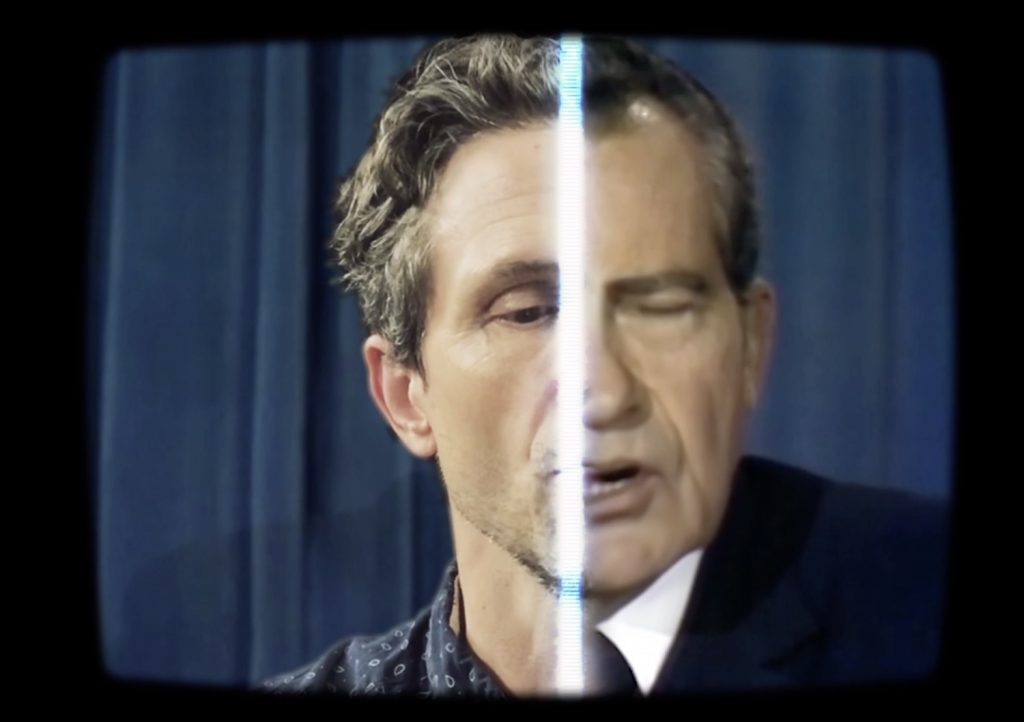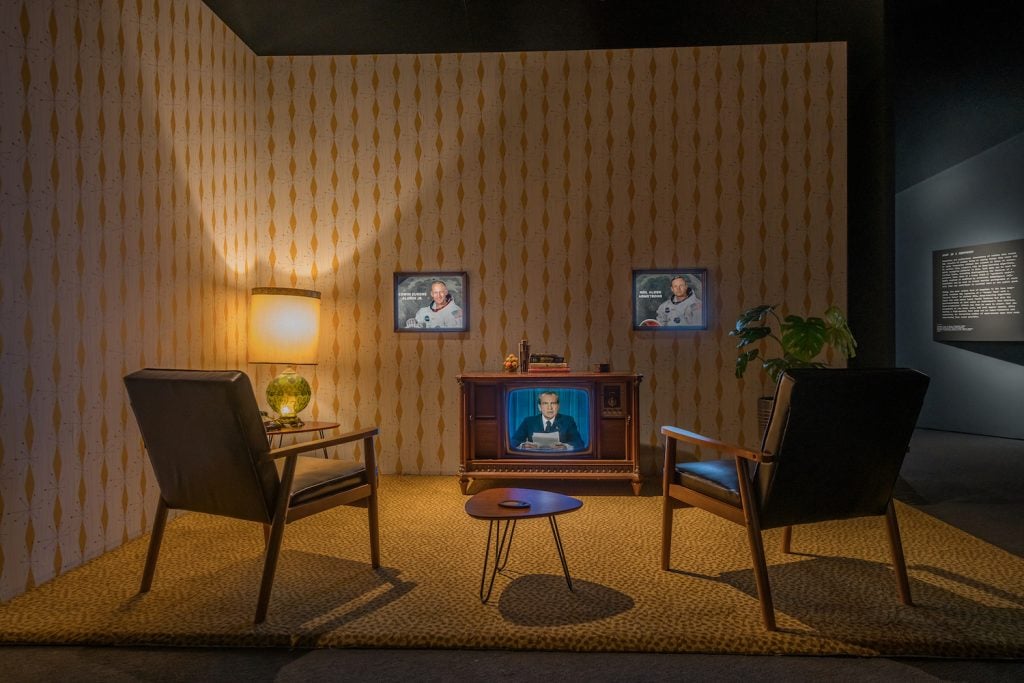On View
Dive Into the Confusing and Manipulative World of Deepfakes Through This Chilling Show at the Museum of the Moving Image
Can you spot a deepfake? The results may surprise you.

Can you spot a deepfake? The results may surprise you.

“Can you spot a Deepfake?” That is the question that first greets visitors to the website for In Event of Moon Disaster, an Emmy Award-winning documentary that uses deepfake technology to present an alternate history of the 1969 Apollo 11 mission to land on the moon.
After viewers answer either “yes” or “no,”—if you click yes, the response chides: “Okay Hot Shot, Let’s Go”—they watch a short film and then are asked a series of questions to discern what in the video is real and what is not. The results are surprising, to say the least.
That’s because the video depicts US President Richard Nixon informing the public that the Apollo 11 astronauts did not survive their mission. The speech was written for Nixon by William Safire in case such an unfortunate scenario occurred. Since it didn’t, the speech was never delivered.
At the Museum of the Moving Image in Astoria, Queens, the film, presented on an older model television set in a period-appropriate living room, serves as the centerpiece of a fascinating, timely, and unsettling exhibition “Deepfake: Unstable Evidence on Screen.” The show explores the phenomenon of “deepfake” videos, which use advanced artificial intelligence and machine learning to create deceptive content, and how they are used to manipulate audiences and perpetuate misinformation or propaganda.

Installation view of In Event of Moon Disaster at the Museum of the Moving Image. Photo by Thanassi Karageorgiou / Museum of the Moving Image.
The moon disaster film, which was co-directed by Francesca Panetta and Halsey Burgund and produced by the MIT Center for Advanced Virtuality, is a perfect jumping-off point to explore the potential harms and benefits of deepfake technology.
By presenting “an alternative version” of landmark historical events, the installation demonstrates that the representation of both the past and present is subject to powerfully effective technical manipulation, which can challenge our belief in what is real, according to a statement about the show.
Excerpts from the documentary To Make a Deepfake (2020), produced by Scientific American, are also on view, as well as a wide range of deepfake videos distributed online.

Installation view of How do you spot a deepfake? Mirror Room. Photo by Thanassi Karageorgiou / Museum of the Moving Image.
The show also offers examples of contested depictions of actual events from throughout the history of the moving image, ranging from a Spanish-American War reenactment dating to 1899 and credit to Thomas Edison, to the 1963 Zapruder footage of the JFK assassination.
Keep an eye on the related event series “Questionable Evidence: Deepfakes and Suspect Footage in Film,” which includes screenings and other public programs that explore synthetic media from a variety of perspectives.
The exhibition was organized by Barbara Miller, the museum’s deputy director for curatorial affairs, and Joshua Glick, assistant professor of English, film, and media studies at Hendrix College and a fellow at the Open Documentary Lab at MIT.